kabVisio/iStock/GettyImages
Some of the most richly flavored foods take a long time to prepare, from well-aged cheeses to smoked and cured hams. Most people buy those products already made by professionals, but you may want to make your own. Finding the necessary ingredients can sometimes be a challenge. For example, many vintage recipes for curing ham require saltpeter in the salt mixture. Saltpeter is difficult to find, but more modern alternatives are available from online sources and butcher's supply shops.
A Useful Impurity
Saltpeter is a mineral salt, a naturally occurring mineral known chemically as potassium nitrate. It's a common impurity found in many salt mines, and for centuries butchers and cooks have valued those salts for their virtues in meat preservation. If saltpeter was part of the curing mixture, the meats lasted longer, were less likely to spoil or cause illness, and the ham or bacon retained a cheery pink color instead of becoming dull and gray.
How It Works
By the end of the 19th century, scientists were able to isolate potassium nitrate as the active ingredient in saltpeter. They also found that bacteria in the cured meats turned some of the potassium nitrate into nitrite, which in turn was what killed harmful bacteria. Long-curing dried hams still use a pure form of nitrate, but bacon and wet-cured hams skip the middleman and use smaller quantities of pure nitrite instead. The nitrite kills Clostridium bolulinum, the bacteria responsible for botulism, and many other potentially harmful pathogens. Without it, cured meats would be a riskier food.
Curing What Ails You
Most authorities recommend against using saltpeter for home curing of meats, because of its inconsistent strength. Commercial curing mixtures are a much better alternative. The quantities needed for a single ham are small, and most home scales aren't accurate enough to measure them safely. Usually they're sold premixed instead, combined with salt in a ready-to-use mixture. Salt manufacturers sell their mixtures at the supermarket, while butcher supply shops sell tinted curing mix or "Prague powder" in bulk. The professional products can be weighed on a home kitchen scale, then mixed with the correct amount of salt when you're curing your ham.
A Word of Caution
Some commercially cured meats are prepared without any nitrates or nitrites at all, because these chemicals do pose a slight risk as carcinogens. This can only be done safely by professionals, so stick to using the traditional methods at home. Be diligent about using only the amounts specified in your recipe. Nitrates and nitrites can be toxic if you use too much. If you've purchased yours in bulk, rather than in commercial packaging, label it clearly and keep it away from children. It's easily mistaken for table salt, an error that could have serious repercussions for your health.
Related Articles
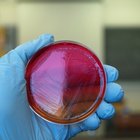
Uses of Saltpeter in Food
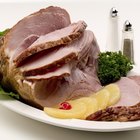
Does Boiled Ham Have Nitrites?

How to Make Salt Brine
How Much Sausage Seasoning Do You Put ...

What Is Accent Seasoning?
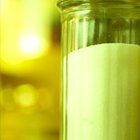
Salt Vs. Non-Iodized Salt

What Is Hog Casing Made Of?

What Is Gray Salt?

What Is Dye Made From?
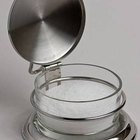
What Is a Salt Cellar?

How Long Can Smoked Meat Last Without ...
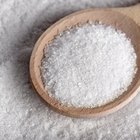
Nutritional Information for Johnny's ...

I Need a Substitute for Baking Soda in ...

What Is the Difference Between Salt ...
What Cut of Meat Do You Use to Make ...
Does Cake Flour Contain Baking Soda & ...

Salt As an Insecticide

What Is Agave Cactus Juice?

How to Finely Grind Celtic Sea Salt

Will Cream of Tartar Whiten Teeth?
References
- On Food and Cooking: The Science and Lore of the Kitchen; Harold McGee
- National Center for Home Food Preservation: Curing Foods
Writer Bio
Fred Decker is a trained chef and prolific freelance writer. In previous careers, he sold insurance and mutual funds, and was a longtime retailer. He was educated at Memorial University of Newfoundland and the Northern Alberta Institute of Technology. His articles have appeared on numerous home and garden sites including GoneOutdoors, TheNest and eHow.